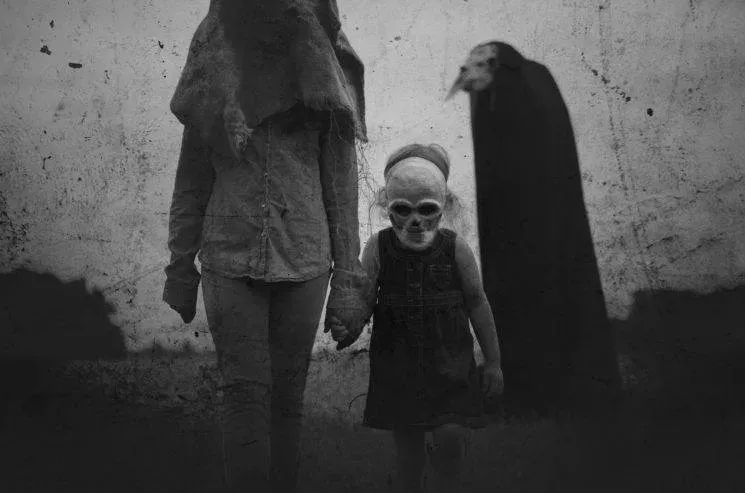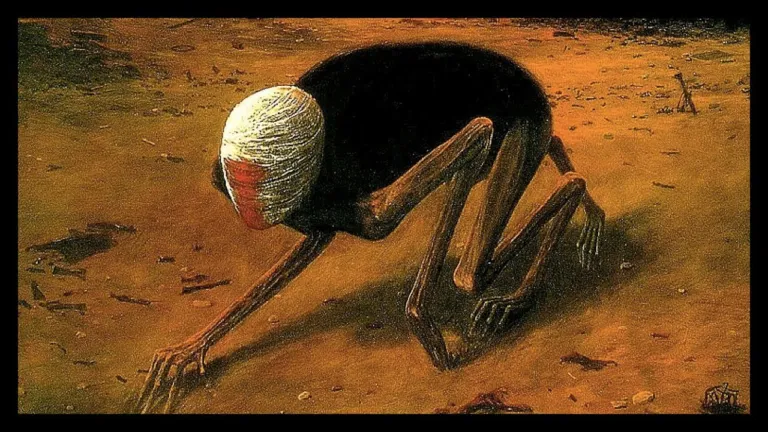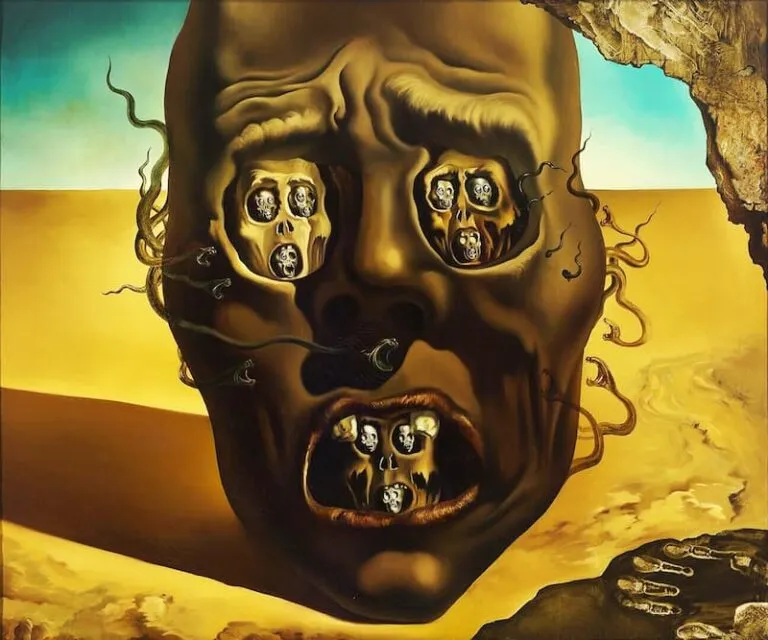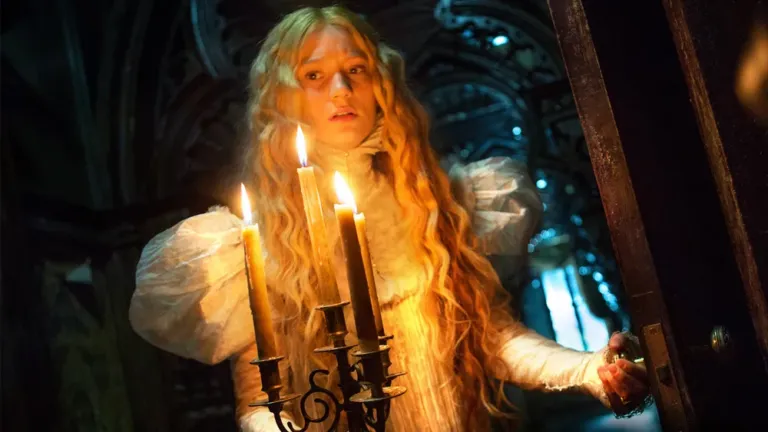The Unsettling and Surreal Atmospheres of Thomas G. Anderson
Thomas G. Anderson is an American photographer and visual artist known for his innovative and disturbing approach to horror photography. His work is distinguished by its ability to evoke unsettling and surreal atmospheres, blending elements of Gothic, symbolism, and surrealism into images that explore the darkest depths of the human psyche. Anderson has constructed a visual universe that not only captures horror in a traditional sense but transforms it into a form of art rich with symbolic and psychological meanings. The Unsettling and Surreal Atmospheres of Thomas G. Anderson.
 Origins and Influences
Origins and Influences
Thomas G. Anderson was born and raised in a small Midwestern town in the United States, a setting that would have a profound impact on his work. Growing up in a rural environment, surrounded by desolate landscapes and tight-knit communities, Anderson developed an early interest in the macabre and supernatural. Ghost stories, local legends, and urban horror tales from his childhood became the foundation of his artistic imagery.
His artistic influences range from horror film masters like Alfred Hitchcock and David Lynch, to iconic photographers like Joel-Peter Witkin and Cindy Sherman. However, his aesthetic has evolved in a unique direction, characterized by a narrative approach that seeks to explore not only physical horror but also psychological terror. Anderson is fascinated by the boundaries between reality and imagination, between life and death, and these themes are central to his work.
Style and Technique: Immersing in Darkness
Thomas G. Anderson’s work is characterized by a Gothic and surreal aesthetic, with a strong use of chiaroscuro and complex compositions. His photographs are often set in liminal spaces, such as dark forests, abandoned houses, or claustrophobic interiors, creating a sense of isolation and anguish. These settings, rich in detail and dark atmospheres, provide the stage for his visual stories, loaded with tension and mystery.
Anderson’s photographic technique is sophisticated and meticulous. He prefers analog photography, often working with black-and-white film to achieve a timeless quality and dense contrast atmosphere. His ability to manipulate light and shadow is one of his signature traits and helps create images that seem to belong to a parallel world, suspended between dream and nightmare.
Another key aspect of his style is the use of symbolic and metaphorical elements. His images are rich in symbols that allude to themes such as death, decay, loss, and transformation. Every element in his photographs is carefully chosen for its meaning and ability to evoke an emotional response. This attention to detail gives his works a depth that goes beyond the simple representation of horror, transforming them into visual meditations on the human condition.
 Themes: Exploring the Unconscious
Themes: Exploring the Unconscious
The themes that Anderson explores through his photography are often tied to the human psyche and its deepest fears. One recurring theme is that of identity and its fragmentation. His images often depict human figures in a state of disorientation or transformation, as if they are trapped between different realities or identities. This reflects his interest in the experiences of alienation and disorientation, common to many of his subjects.
Another central theme in Anderson’s work is memory and trauma. His photographs often evoke a sense of distorted nostalgia, as if capturing fragments of lost or repressed memories. This temporal dimension, mixing past and present, contributes to a sense of unease and questions the nature of reality and time.
Anderson is also fascinated by the concept of boundaries: the boundary between life and death, between sanity and madness, between reality and fantasy. This is reflected in his preference for images that seem to challenge logic and narrative coherence, leading the viewer to question what is real and what is the product of a troubled mind. In this way, his works function not only as visual representations of horror but also as conceptual explorations of the liminal zones of consciousness.
The Creative Process: From Idea to Realization
Thomas G. Anderson’s creative process is a complex journey that begins with ideation and ends with post-production. Every project starts with a concept or idea that Anderson develops through sketches, research, and storyboards. This planned approach allows him to have clear control over the composition and atmosphere of his photographs, ensuring that each element contributes to the visual narrative.
During the shooting phase, Anderson is known for his attention to detail and his ability to create immersive environments. He often builds elaborate sets, using props and costumes that contribute to the illusion of a different world, suspended between reality and fantasy. The shooting phase is followed by meticulous post-production, where Anderson works on the images to emphasize tones and textures, achieving the desired atmosphere.
One of the most interesting aspects of Anderson’s work is his ability to create open narratives. His photographs rarely tell complete stories; instead, they present fragments, suggestions, and symbols that invite the viewer to interpret and fill in the gaps. This approach reflects his interest in the subjective nature of perception and the role of the viewer in constructing meaning.
 Critical Reception and Cultural Impact
Critical Reception and Cultural Impact
Thomas G. Anderson’s work has received widespread critical attention, with reviews praising his ability to evoke complex emotions and explore deep themes through a unique aesthetic. His photographs have been exhibited in galleries and museums worldwide and have attracted a diverse audience, from horror enthusiasts to contemporary art lovers.
The cultural impact of Anderson’s work extends beyond the world of photography. His images have influenced filmmakers, writers, and other visual artists, inspiring new explorations of the horror and surrealism genres. His ability to blend elements of horror with deep psychological reflection has opened new paths for contemporary art, demonstrating that horror can be not only a source of fear but also a tool for exploring the complexities of human experience.
Conclusion: A Master of Contemporary Horror
Thomas G. Anderson is undoubtedly one of the most innovative and influential horror photographers of his generation. Through his work, he has redefined the boundaries of the genre, transforming horror into a sophisticated and deeply meaningful form of art. His photographs, rich in symbolism and emotional tension, not only capture the viewer’s attention but also invite reflection on personal fears, dreams, and the mysteries of existence.
Through his unique aesthetic and narrative approach, Anderson has created a body of work that not only represents horror in a traditional sense but transforms it into a visual meditation on the human condition. With his work, he has shown that horror art can be a powerful tool for exploring the depths of the psyche and confronting the deepest fears, making him a central figure in the contemporary art scene.
Don’t miss out on reading the articles about the other Top 10 Horror Photographers… they have explored the depths of human anguish and terror, capturing images that challenge and fascinate viewers. Their ability to evoke intense emotions through photography has made them essential figures in the global art scene.

Subscribe to our YouTube channel

 Origins and Influences
Origins and Influences Themes: Exploring the Unconscious
Themes: Exploring the Unconscious Critical Reception and Cultural Impact
Critical Reception and Cultural Impact




